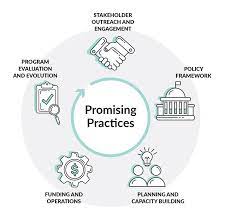The recently signed Infrastructure Investment and Jobs Act includes significant funding to expand broadband access, to help households pay for their monthly broadband connections and to help people learn how to productively use those connections. This legislation represents Congress’ first formal recognition of the essential nature of high-speed internet.
Historically, broadband funding has been distributed from federal entities like the Federal Communications Commission or U.S. Department of Agriculture directly to internet providers. The Government Accountability Office, which monitors and audits government operations, has been critical of these efforts.
This time, however, states are at the center of the funding that is coming down the pipeline. The $42.5 billion Broadband Equity, Access, and Deployment program, known as BEAD, requires each state to generate a five-year action plan laying out how it will use the funds, including a process for prioritizing locations that are classified as “unserved” or “underserved.”
Similarly, the $2.7 billion Digital Equity Act requires each state to establish an organization responsible for developing a digital equity plan, which will help to disburse subgrants. Digital equity means ensuring that every community has adequate access to the technologies and skills needed to fully participate in society.
From newbies to wily veterans
Not all states are equally positioned to handle the funds that will flow down from the federal government. Some states have operated formal broadband offices for years, and many have extensive experience running their own broadband grant programs. In others there are multiple agencies with jurisdiction over broadband, so even deciding who will develop the action plan may be challenging.
The largest portion of the forthcoming broadband funding is the BEAD program focused on the provision of new broadband infrastructure. Each state will be awarded an initial amount of $100 million, with the remainder of the $42.5 billion allocated based on the percentage of unserved locations across states. The states are then responsible for disbursing these funds as subgrants. Unserved locations can include agricultural and business sites, not just households.
So, while it might seem unfair that Vermont, with fewer than 50,000 people classified as unserved, receives the same initial allocation as Texas, with over 1.2 million people unserved, this investment is less than 15% of the total BEAD funding. The $100 million should also provide an incentive for states to establish their five-year action plans and to set up offices capable of awarding grants within their borders.
Source : https://www.popsci.com/technology/broadband-access-plan-states/







